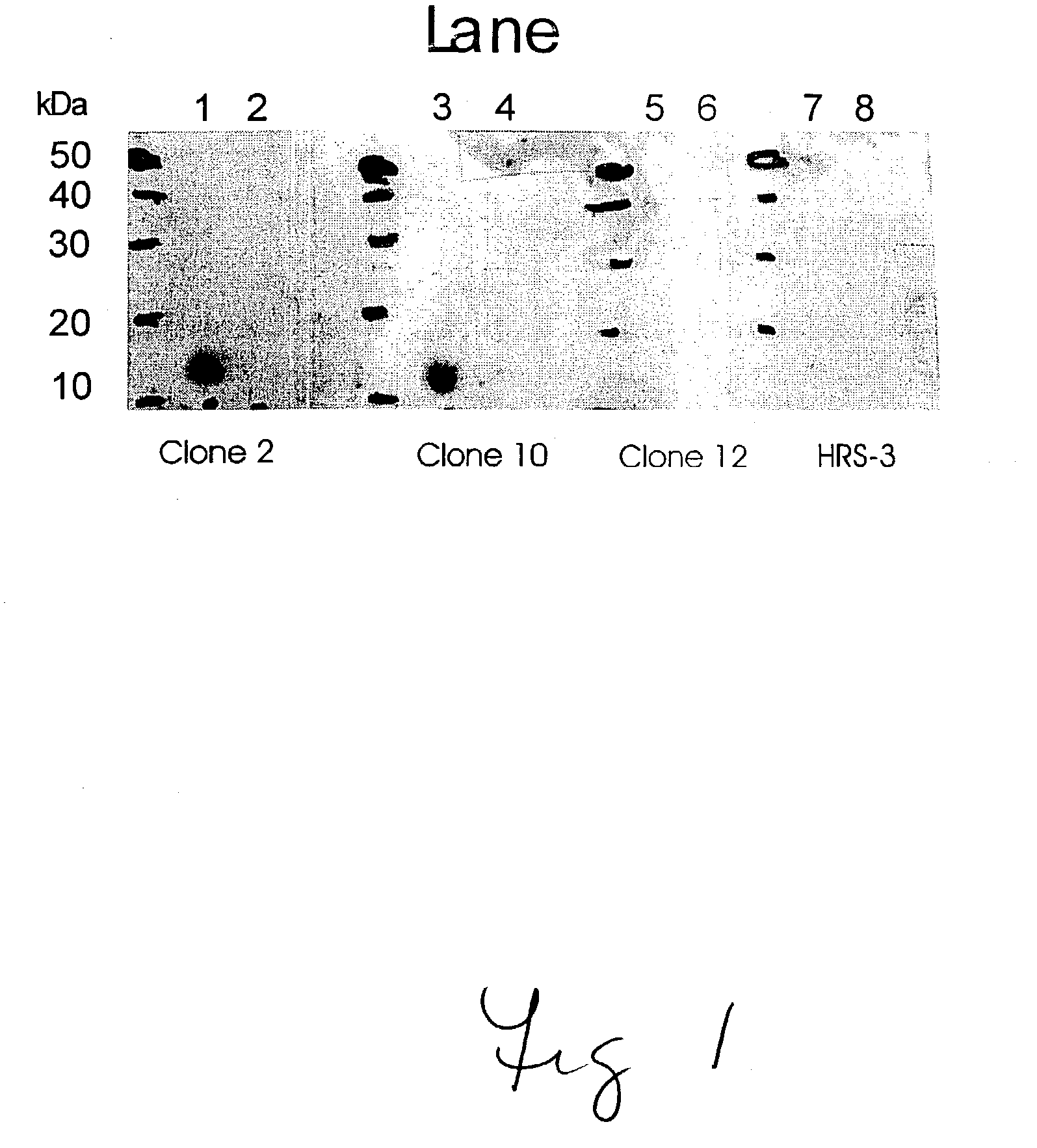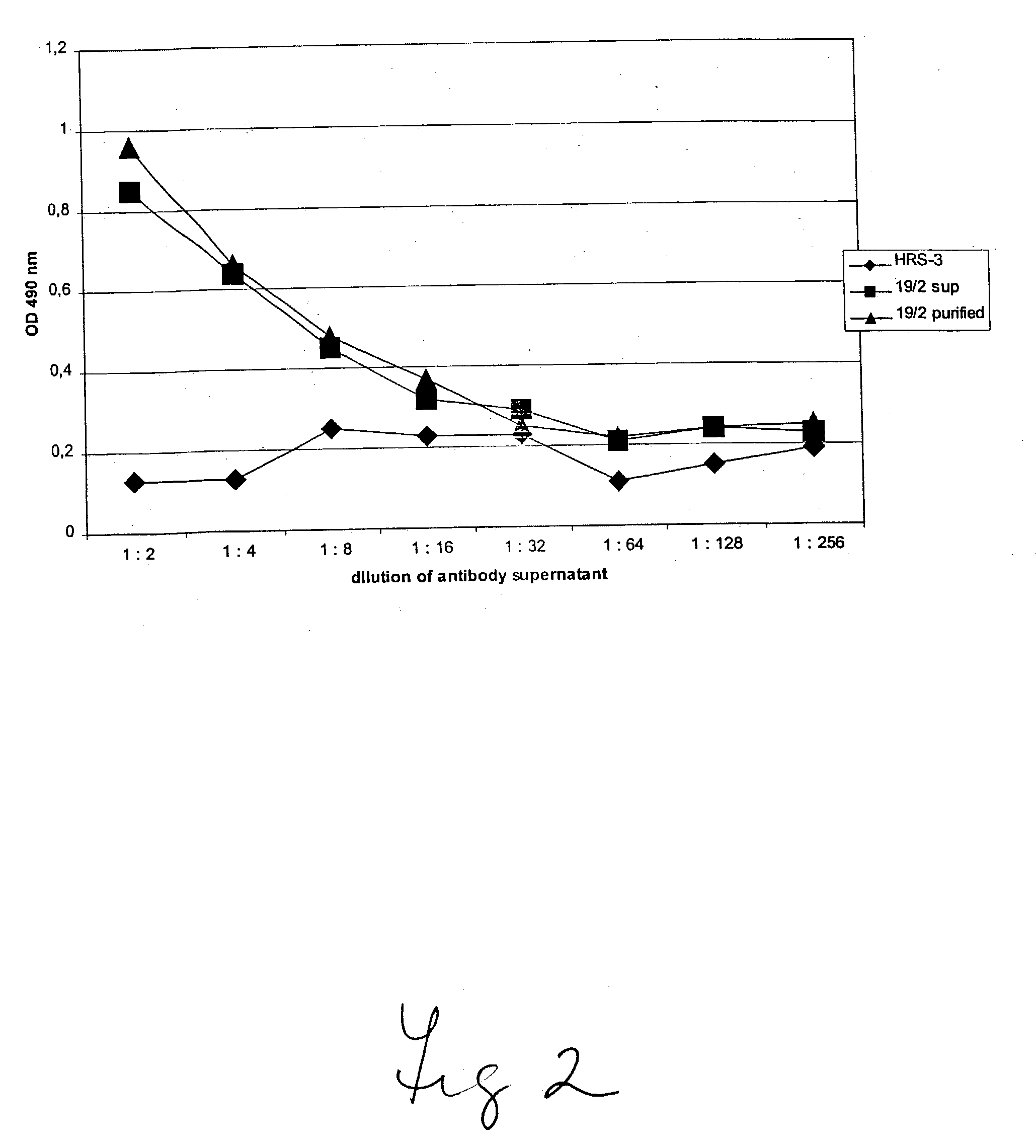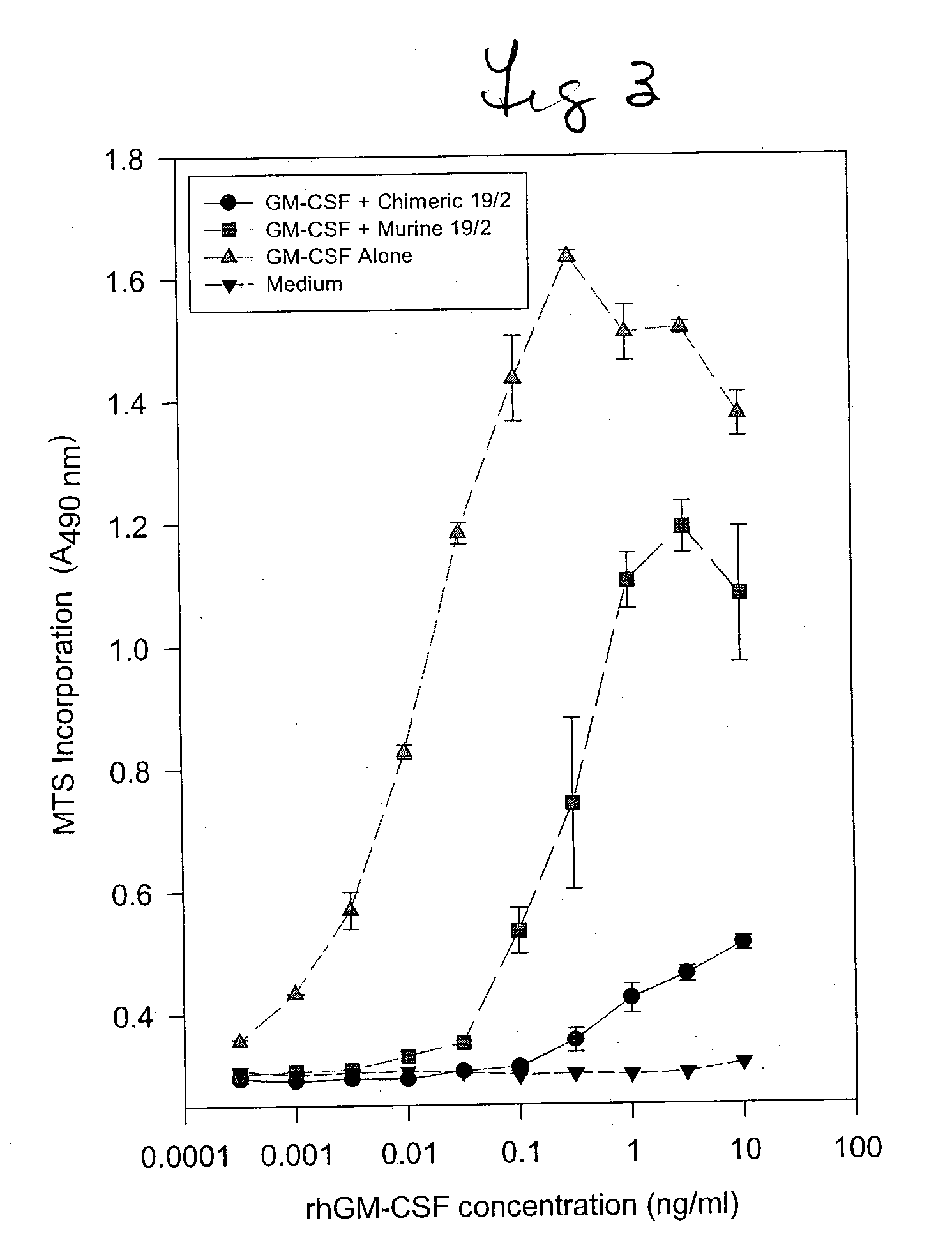Humanized GM-CSF antibodies
a technology of gmcsf and antibodies, which is applied in the field of humanized gmcsf antibodies, can solve the problems of preventing continued administration and reducing the efficacy of the antibody in patients
- Summary
- Abstract
- Description
- Claims
- Application Information
AI Technical Summary
Benefits of technology
Problems solved by technology
Method used
Image
Examples
example 1
[0048] Cloning Strategy for 19 / 2 Heavy (H) and Light (L) Variable (V)-Region Genes.
[0049] Total RNA from the hybridoma producing murine 19 / 2 antibody was obtained by standard RNA isolation techniques (Chomczynski et al. (1987) Anal. Biochem. 162: 156-159.; incorporated by reference herein in its entirety). First strand cDNA was prepared using a commercially available, first strand cDNA synthesis kit and priming with d(T)18 for both the heavy and light chains (Renner et al. (1998) Biotechniques 24(5): 720-722.; incorporated by reference herein in its entirety). The resulting cDNA was subjected to PCR using combinations of primers for the heavy and light chains. The nucleotide sequences of the 5' primers for the heavy and light chains are shown in Tables 1 and 2 respectively. The 3' primers are shown in Table 3. The light chain primer hybridized within the mouse kappa constant region not far from the V--C junction. The heavy chain 3' primer hybridised within the CH-1 constant region o...
example 2
[0052] Ig Sequences Cloned from the 19 / 2 Murine Hybridoma.
[0053] Using the cloning strategy described, supra, PCR products for VH and VL of murine 19 / 2 were cloned using a commercially available product, and art recognized techniques. For the murine 19 / 2 VL region, PCR products were obtained using the mouse kappa constant region primer and primers MKV2 and MKV7 (SEQ ID NOS: 14 & 19). For the mouse 19 / 2 VH region, PCR products were obtained using the mouse gamma 1 constant region primer and primers MHV2, MHV5 and MHV7 (SEQ ID NOS: 2, 5 and 7). Extensive DNA sequencing of the cloned V-region inserts revealed two different light chain sequences and 2 different heavy chain sequences. Pseudogenes for heavy and light chain were amplified and were eliminated by standard sequence analyses. A novel immunoglobulin-coding sequence was determined for both the heavy and light chains. This is set forth at SEQ ID NOS: 27, 28, 29 & 30, which present the cDNA and amino acid sequences for the murine ...
example 3
[0054] Mouse 19 / 2 Heavy Chain Leader Sequence.
[0055] When comparing the DNA sequence of the leader sequence for 19 / 2 heavy chain obtained with the primers described supra, with the database, it appeared that the 19 / 2 HC leader sequence is short (17 amino acids) and unique vis a vis public data bases. Specifically, amino acids 2, 3 and 5 were E, L & M, as compared to S, W & F in the data bases. As compared to the database, hydrophilic amino acids in the N-terminal region were separated by neutral or basic ones, respectively; however, since the influence of these changes on the secretory capability of the leader sequence is unclear, this sequence was unaltered in further experiments.
PUM
| Property | Measurement | Unit |
|---|---|---|
| Concentration | aaaaa | aaaaa |
| Concentration | aaaaa | aaaaa |
| Concentration | aaaaa | aaaaa |
Abstract
Description
Claims
Application Information
 Login to View More
Login to View More - R&D
- Intellectual Property
- Life Sciences
- Materials
- Tech Scout
- Unparalleled Data Quality
- Higher Quality Content
- 60% Fewer Hallucinations
Browse by: Latest US Patents, China's latest patents, Technical Efficacy Thesaurus, Application Domain, Technology Topic, Popular Technical Reports.
© 2025 PatSnap. All rights reserved.Legal|Privacy policy|Modern Slavery Act Transparency Statement|Sitemap|About US| Contact US: help@patsnap.com



